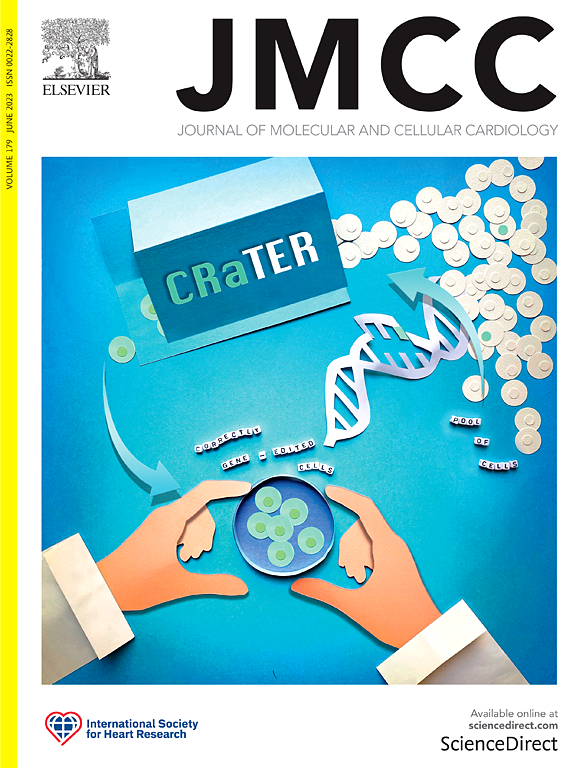Coronary microcirculation in myocardial ischemia: A genetic perspective
IF 4.7
2区 医学
Q1 CARDIAC & CARDIOVASCULAR SYSTEMS
引用次数: 0
Abstract
Coronary microvascular dysfunction (CMD) is a major contributor to ischemic heart disease (IHD), acting both independently and together with atherosclerosis. CMD encompasses structural and functional microcirculatory changes that result in dysregulated coronary blood flow. Structural abnormalities include microvascular remodeling, resulting in arteriolar and capillary narrowing, perivascular fibrosis and capillary rarefaction. Endothelial dysfunction and smooth muscle cell hyperactivity further impair microcirculation. Genetic factors may play a crucial role in the pathophysiology of CMD, mainly due to single nucleotide polymorphisms (SNPs) in genes that regulate coronary blood flow and microcirculation structural modifications. This manuscript aims to review the genetic determinants of CMD, with particular focus on ion channels, microRNAs (miRNAs), and proteins involved in the endothelial environment. The improving knowledge about genetic aspects of CMD opens the possibility to have new biomarkers, improving diagnosis and the development of targeted treatments in light of an even more patient-tailored approach.
心肌缺血的冠状动脉微循环:遗传学的观点
冠状动脉微血管功能障碍(CMD)是缺血性心脏病(IHD)的主要诱因,既可以单独发生,也可以与动脉粥样硬化一起发生。CMD包括结构和功能微循环改变,导致冠状动脉血流失调。结构异常包括微血管重塑,导致小动脉和毛细血管狭窄,血管周围纤维化和毛细血管稀疏。内皮功能障碍和平滑肌细胞过度活跃进一步损害微循环。遗传因素可能在CMD的病理生理中发挥关键作用,主要是由于调节冠状动脉血流和微循环结构修饰的基因的单核苷酸多态性(snp)。本文旨在回顾CMD的遗传决定因素,特别关注离子通道,microRNAs (miRNAs)和内皮环境中涉及的蛋白质。随着对CMD遗传方面知识的不断提高,人们有可能获得新的生物标志物,提高诊断水平,并根据更适合患者的方法开发靶向治疗。
本文章由计算机程序翻译,如有差异,请以英文原文为准。
求助全文
约1分钟内获得全文
求助全文
来源期刊
CiteScore
10.70
自引率
0.00%
发文量
171
审稿时长
42 days
期刊介绍:
The Journal of Molecular and Cellular Cardiology publishes work advancing knowledge of the mechanisms responsible for both normal and diseased cardiovascular function. To this end papers are published in all relevant areas. These include (but are not limited to): structural biology; genetics; proteomics; morphology; stem cells; molecular biology; metabolism; biophysics; bioengineering; computational modeling and systems analysis; electrophysiology; pharmacology and physiology. Papers are encouraged with both basic and translational approaches. The journal is directed not only to basic scientists but also to clinical cardiologists who wish to follow the rapidly advancing frontiers of basic knowledge of the heart and circulation.

 求助内容:
求助内容: 应助结果提醒方式:
应助结果提醒方式:


